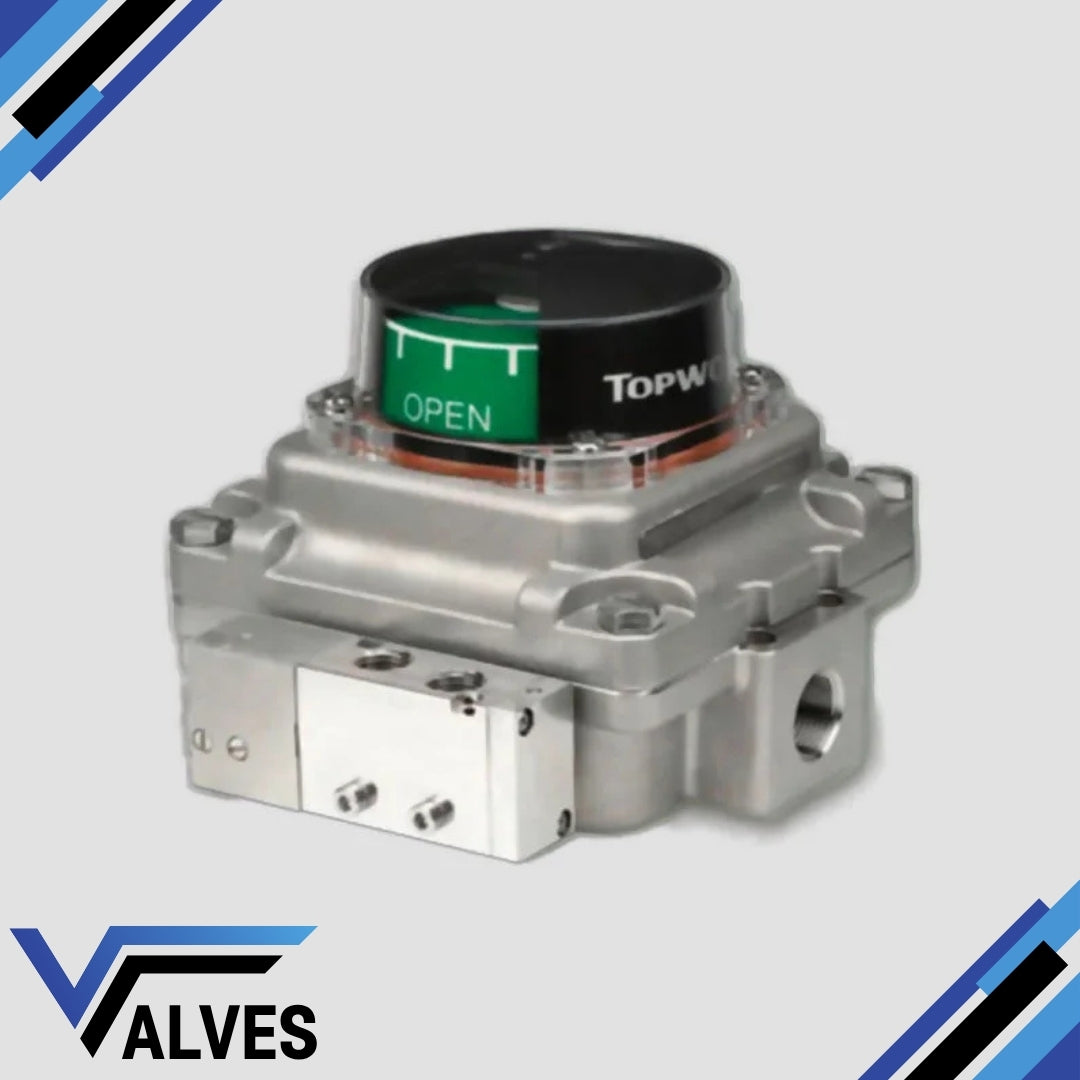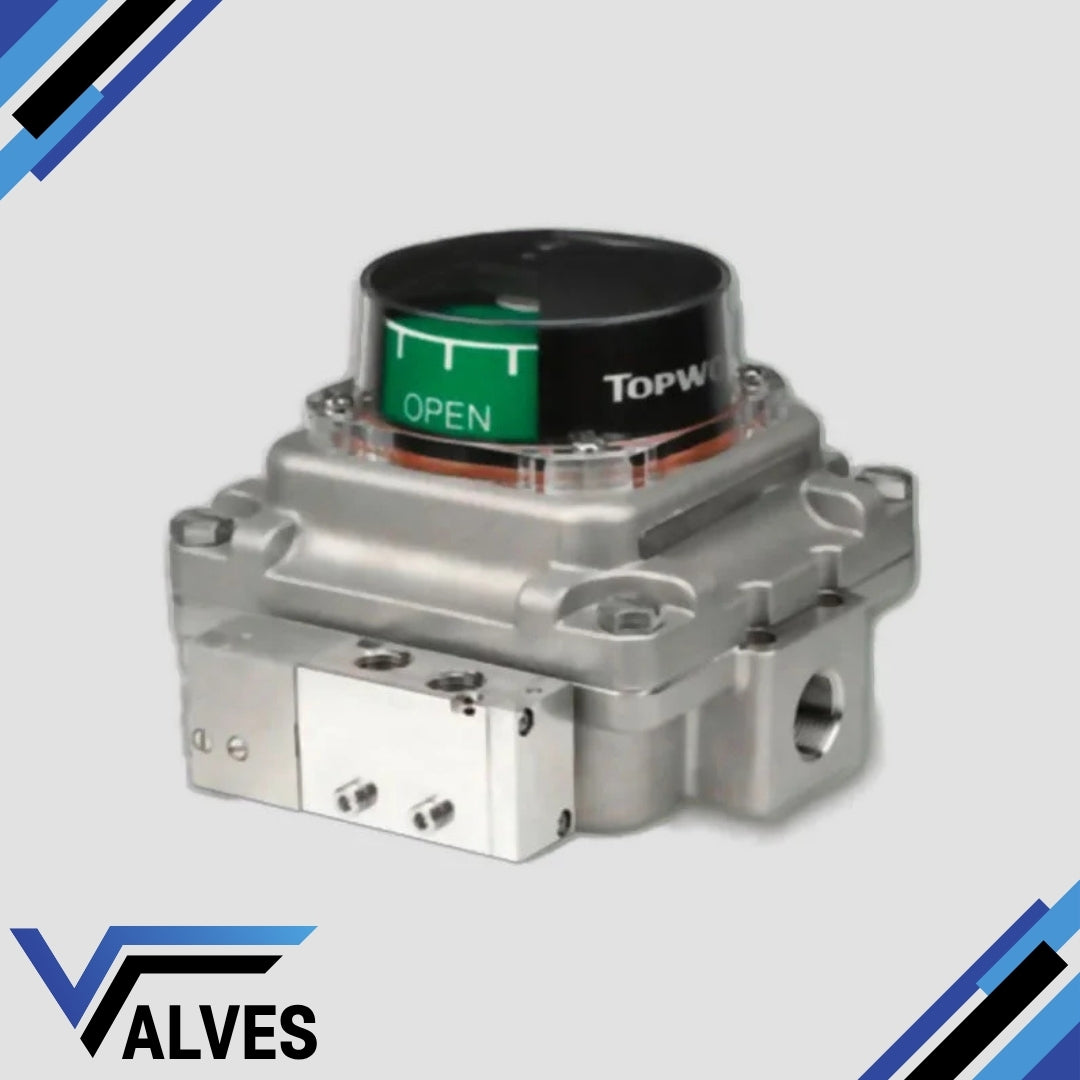Topworx Switchboxes
TopWorx Limit Switch Box TXS-0X0GMMM000006499 Valve Monitor
TopWorx Limit Switch Box TXS-0X0GMMM000006499 Valve Monitor
Couldn't load pickup availability
The TopWorx TXS Series combines advanced valve monitoring capabilities with a compact, direct-mount design. It offers flexibility with various bus networks, position sensors, and solenoid valves, supporting both hazardous and safe area applications. The switchbox ensures reliable performance with its durable construction and explosion-proof certification, allowing it to excel in highly demanding industries.
Key Features:
- Corrosion Resistance: 316 stainless steel housing, ideal for corrosive and washdown environments.
- Compact Design: Direct-mount, low-profile design suitable for tight spaces.
- Wide Temperature Range: Operates reliably between -60°C to 105°C (-76°F to 221°F).
- GO™ Switch Technology: SPDT dry contact switches provide precise, low-power operation with zero voltage drop.
- Global Certifications: Suitable for hazardous locations, with IECEx, ATEX, and UL certifications.
- Flexible Integration: Supports a variety of communication networks and sensors for enhanced control and monitoring.
Additional Information:
The TXS switchbox is designed for both on/off and modulating valve applications. Its highly visible display ensures easy operation, and the hermetically sealed switches offer long-lasting durability even in the most challenging conditions. With a focus on minimising power consumption and enhancing operational safety, this valve monitor is an excellent choice for industries such as oil and gas, pharmaceuticals, and marine applications.
Share

FAQ's
What is the difference between a valve and an actuator?
What types of actuators are available?
The main types of actuators are:
Pneumatic actuators – use compressed air for fast, reliable operation.
Electric actuators – use electrical power for precise control.
Hydraulic actuators – use fluid pressure for high-torque applications.
Each type offers unique advantages depending on the environment, media, and system control needs.
How do I choose the right actuator for my valve?
To select the correct actuator, consider:
Valve type and torque requirement
Power source available (air, electric, or hydraulic)
Operating environment (temperature, humidity, hazardous area)
Control signal type (on/off or modulating)
Matching actuator torque and compatibility with the valve’s ISO mounting ensures reliable performance.
What are the main types of valves used in automation?
The most common valves in automated systems include:
Ball valves – for tight shutoff and quick operation.
Butterfly valves – for larger flow control with compact design.
Globe valves – for precise throttling and flow regulation.
Check valves – to prevent backflow.
Gate valves – for full bore flow isolation.
What’s the difference between a double-acting and spring-return actuator?
Double-acting actuators use air (or power) to both open and close the valve.
Spring-return actuators use air to open (or close) the valve, and a built-in spring to automatically return it to a safe position when power or air is lost — ideal for fail-safe operation.
How often should valves and actuators be serviced?
Regular maintenance intervals depend on operating conditions, but a good rule of thumb is to inspect every 6–12 months.
This includes checking for leaks, lubrication, seal wear, and actuator responsiveness to prevent unexpected downtime.

